
Hagåtña: The Heartbeat of Guam
Explore Hagåtña, Guam's capital, where rich history, cultural heritage, and stunning natural beauty come together to offer an unforgettable travel experience.
Hagåtña, the capital of Guam, is a city rich in history and culture. This small yet vibrant city offers a unique blend of ancient Chamorro traditions and Spanish colonial influences. As you walk through its streets, you will find remnants of its storied past, from the Plaza de España to the Dulce Nombre de Maria Cathedral Basilica. In Hagåtña, you can witness the island's legacy through its museums and historical sites. The Guam Museum provides a deep dive into the island's history, while Latte Stone Park showcases ancient Chamorro stone pillars. The peaceful surroundings of the Chief Quipuha Park offer a perfect spot for relaxation and reflection. The city also boasts beautiful beaches and scenic spots. Spend a day at the pristine sands of the Paseo de Susana Park or enjoy a sunset at the Hagåtña Boat Basin. For those interested in local cuisine, the Chamorro Village is a must-visit. Here, you can savor traditional dishes, buy handmade crafts, and experience local entertainment. Hagåtña is not just a place to see; it is a place to experience. Whether you are exploring its historic landmarks, enjoying its natural beauty, or immersing yourself in its vibrant culture, Hagåtña promises an unforgettable journey.
Local tips in Hagåtña
- Visit Chamorro Village on Wednesday evenings for the night market and cultural performances.
- Rent a car to explore the city and its surroundings at your own pace.
- Don't miss the Guam Museum for a comprehensive understanding of the island's history.
- Try local dishes like kelaguen and red rice at local eateries.
- Wear comfortable shoes as the city is best explored on foot.
Hagåtña: The Heartbeat of Guam
Hagåtña, the capital of Guam, is a city rich in history and culture. This small yet vibrant city offers a unique blend of ancient Chamorro traditions and Spanish colonial influences. As you walk through its streets, you will find remnants of its storied past, from the Plaza de España to the Dulce Nombre de Maria Cathedral Basilica. In Hagåtña, you can witness the island's legacy through its museums and historical sites. The Guam Museum provides a deep dive into the island's history, while Latte Stone Park showcases ancient Chamorro stone pillars. The peaceful surroundings of the Chief Quipuha Park offer a perfect spot for relaxation and reflection. The city also boasts beautiful beaches and scenic spots. Spend a day at the pristine sands of the Paseo de Susana Park or enjoy a sunset at the Hagåtña Boat Basin. For those interested in local cuisine, the Chamorro Village is a must-visit. Here, you can savor traditional dishes, buy handmade crafts, and experience local entertainment. Hagåtña is not just a place to see; it is a place to experience. Whether you are exploring its historic landmarks, enjoying its natural beauty, or immersing yourself in its vibrant culture, Hagåtña promises an unforgettable journey.
When is the best time to go to Hagåtña?
Iconic landmarks you can’t miss
Two Lover’s Point
Discover the breathtaking views and romantic legends at Two Lover’s Point, Guam's iconic cliffside attraction offering stunning vistas and rich local folklore.
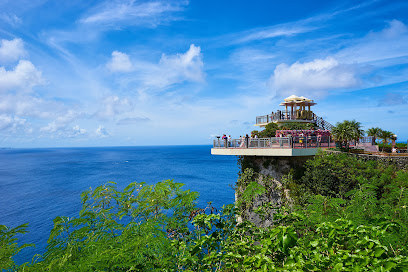
Plaza de España
Explore Plaza de España, a stunning historical landmark in Guam's capital, rich in culture and beauty, perfect for every traveler.
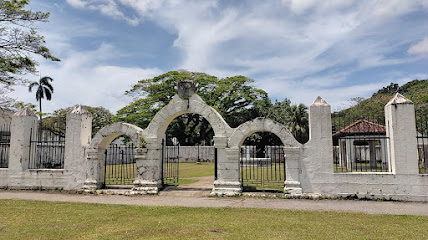
Mosa's Joint
Experience the best of local flavors and classic burgers at Mosa's Joint, a beloved destination for food lovers in Guam.
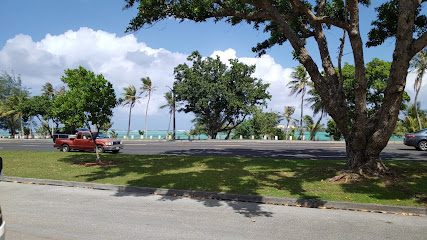
Fort Nuestra Señora de la Soledad
Discover Guam's rich history at Fort Nuestra Señora de la Soledad, a stunning fortress with breathtaking views and captivating stories of the past.
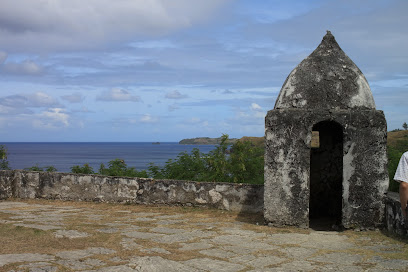
Cetti Bay Overlook
Discover the stunning panoramic views of Cetti Bay Overlook, a hiking gem in Guam that captivates nature lovers and adventure seekers alike.
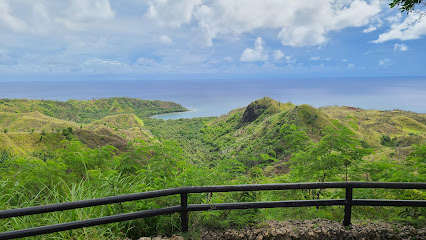
Ritidian Point
Explore Ritidian Point in Guam for stunning beaches, vibrant wildlife, and breathtaking views – a perfect escape into nature's paradise.
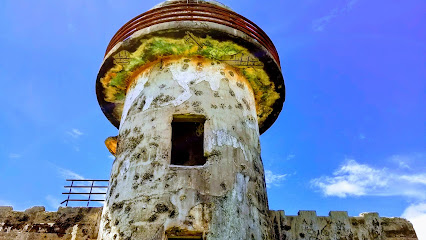
Caliente Restaurant
Experience the vibrant flavors of Mexico at Caliente Restaurant in Hagåtña, offering authentic dishes in a lively atmosphere at budget-friendly prices.
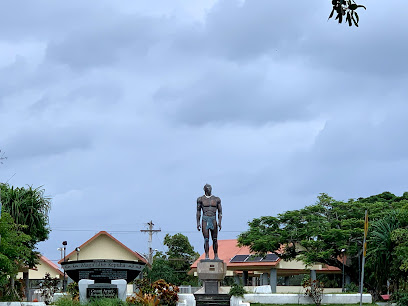
Shirley's Coffee Shop
Experience the charm of Shirley's Coffee Shop in Hagåtña, where delicious breakfasts and freshly brewed coffee create lasting memories of Guam.

Paseo de Susana
Explore Paseo de Susana, a beautiful park in Hagåtña, Guam, offering stunning ocean views, lush landscapes, and a glimpse into local culture.
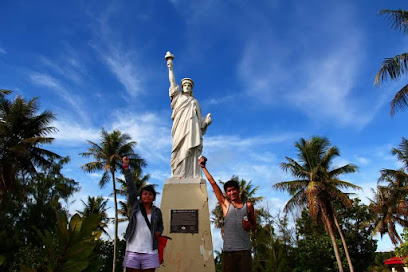
TuRe’ Café
Discover the culinary delights of Guam at TuRe’ Café, where local flavors and warm hospitality await in the heart of Hagåtña.
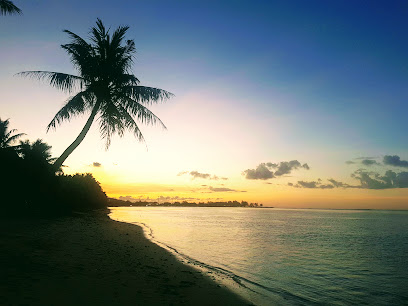
Meskla Chamoru Fusion Bistro - Hagatna
Explore the flavors of Guam at Meskla Chamoru Fusion Bistro, where traditional Chamoru cuisine meets modern culinary artistry in Hagatna.
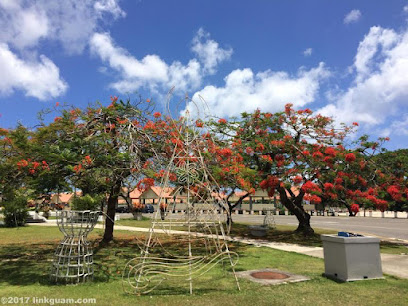
Fort Santa Agueda
Uncover the rich history and breathtaking views at Fort Santa Agueda, Guam's iconic historical landmark and tourist attraction.
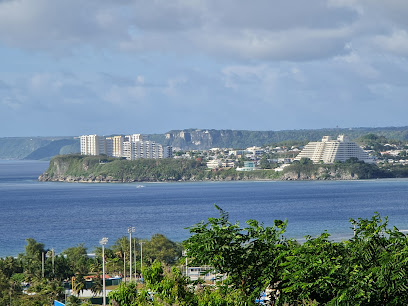
Mighty Purple Cafe
Discover the delightful fusion of local and international flavors at Mighty Purple Cafe in Hagåtña, Guam, where every dish tells a story.
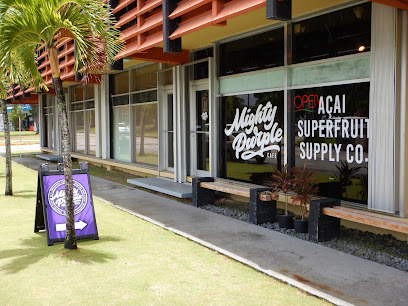
Fish Eye Underwater Observatory
Discover the vibrant marine life of Guam at Fish Eye Underwater Observatory, a unique underwater experience perfect for all ages.
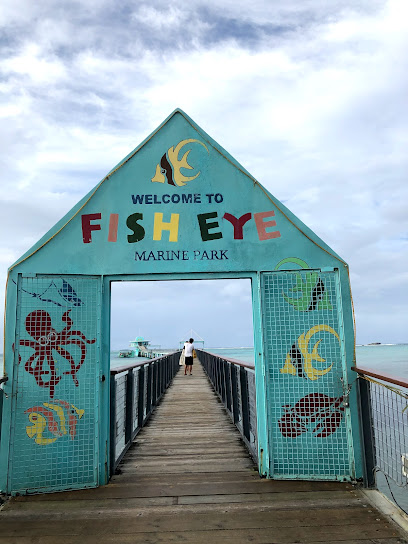
Jamaican Grill
Experience the vibrant flavors of the Caribbean with authentic Jamaican cuisine at the Jamaican Grill in Chamorro Village, Guam.
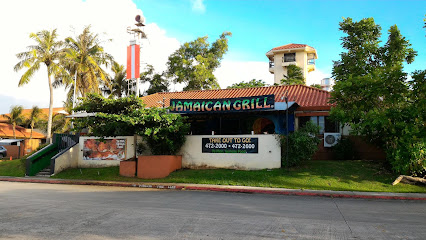
Unmissable attractions to see
Fort Nuestra Señora de la Soledad
Discover the historical charm and stunning views at Fort Nuestra Señora de la Soledad, a must-visit attraction in Guam's rich cultural landscape.
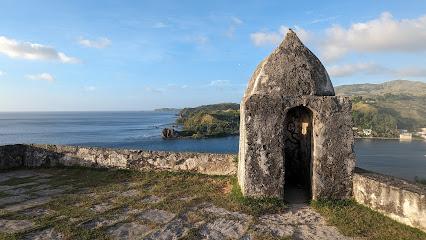
Karera at SandCastle
Discover Karera at SandCastle in Tumon, Guam – a spectacular blend of live theater and exquisite dining, showcasing the rich culture of the island.
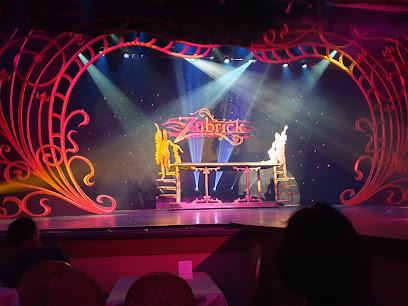
The Guam Farmers Market
Experience the vibrant culture and fresh flavors of Guam at The Guam Farmers Market, a local treasure for tourists seeking authentic island experiences.
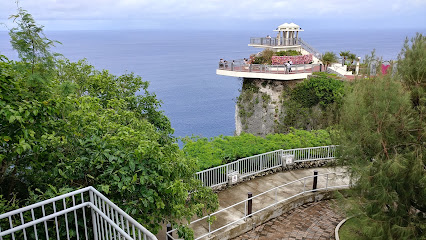
Taotao Tasi Guam
Discover the vibrant culture and delicious BBQ at Taotao Tasi Guam, a captivating dinner theater experience on Gun Beach.
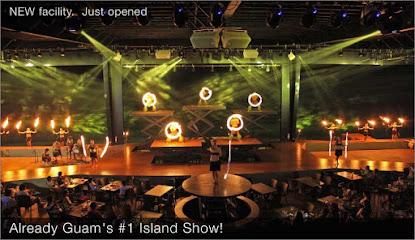
Talo'fo'fo' Falls
Discover the enchanting Talo'fo'fo' Falls in Inalåhan, Guam – a breathtaking escape into nature's beauty with stunning views and refreshing waters.
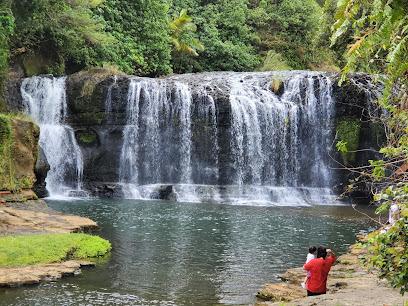
Chamorro Night Market
Discover the vibrant Chamorro Night Market in Hagåtña, Guam, where local flavors, crafts, and culture come together for an unforgettable experience.
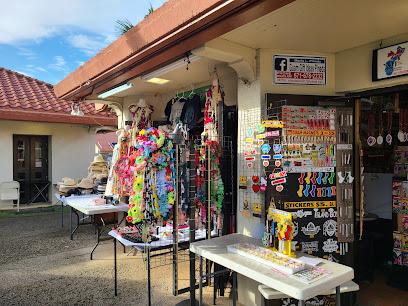
Onward Mangilao Golf Club
Discover the beauty of Guam while enjoying a round of golf at the Onward Mangilao Golf Club, where lush greens meet stunning ocean views.
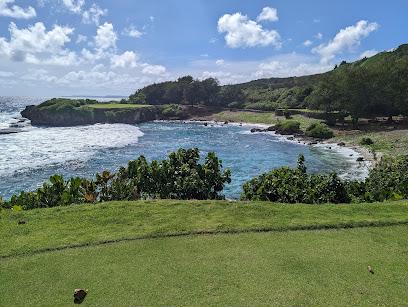
Country Club of the Pacific
Experience golfing in paradise at the Country Club of the Pacific in Guam, where breathtaking views and lush landscapes await every visitor.
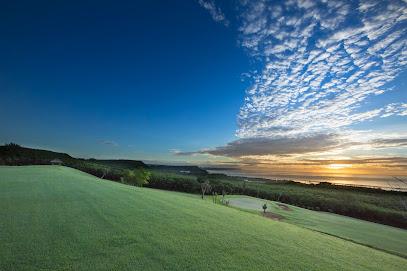
Senator Angel Leon Guerrero Santos Latte Stone Memorial Park
Explore the heart of Guam's history at Senator Angel Leon Guerrero Santos Latte Stone Memorial Park, home to ancient latte stones and serene landscapes.
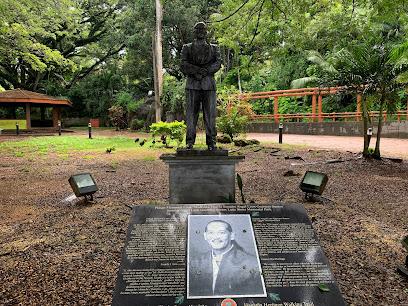
Guam International Raceway
Feel the rush at Guam International Raceway, where thrilling motorsport events meet beautiful island scenery.
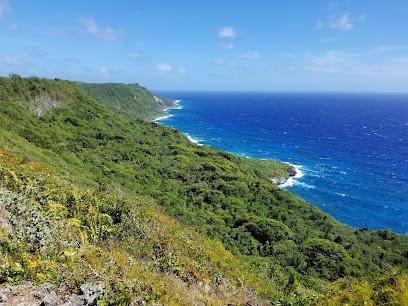
Guam Veterans Memorial Humåtak
Explore the Guam Veterans Memorial Humåtak, a serene tribute honoring the sacrifices of service members, surrounded by stunning natural beauty.
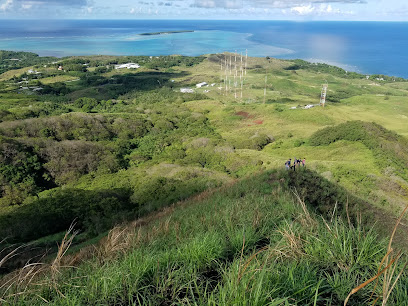
Latte of Freedom
Explore the rich heritage of Guam at the Latte of Freedom, a museum showcasing Chamorro culture and historical significance.
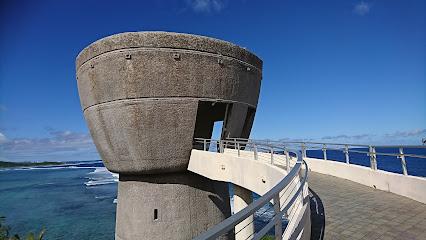
Mount Lamlam Summit
Experience the breathtaking views and exhilarating hiking trails at Mount Lamlam Summit, the highest point in Guam.
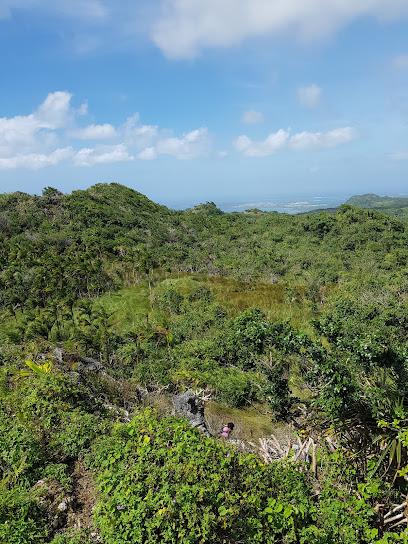
Guam Ocean Adventures
Explore Guam's vibrant marine life with Guam Ocean Adventures – the ultimate destination for diving and snorkeling in Piti, Guam.
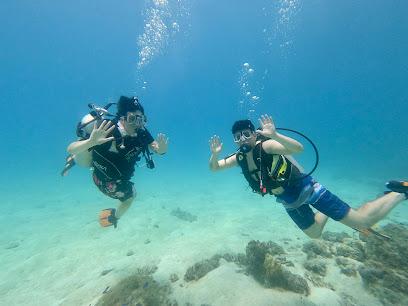
Our Lady of Purification Catholic Church
Discover the serene Our Lady of Purification Catholic Church in Maina, Guam, a beautiful blend of faith and local culture amidst stunning architecture.

Essential places to dine
Mosa's Joint
Discover Mosa's Joint in Hagåtña - where unique hamburgers meet local flavors in a vibrant setting perfect for every traveler.
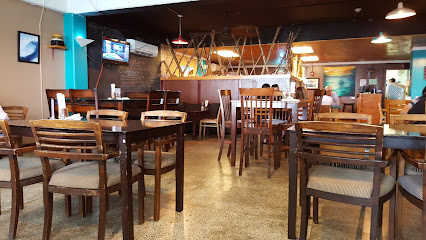
Ruby Tuesday Restaurant
Experience delicious American cuisine at Ruby Tuesday Restaurant in Apotgan, Guam - where every meal is a celebration of flavor.
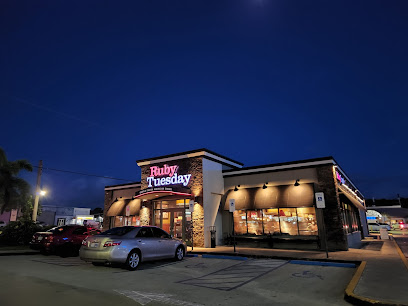
Caliente Restaurant
Experience the vibrant flavors of Mexico at Caliente Restaurant in Hagåtña, Guam - where delicious food meets great prices.
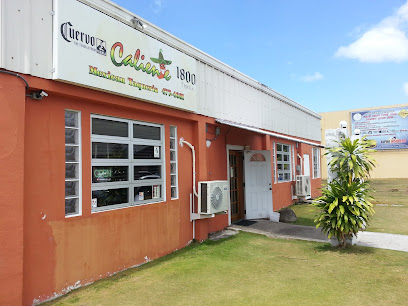
Shirley's Coffee Shop
Experience Guam's vibrant coffee culture at Shirley's Coffee Shop with delicious breakfasts and a cozy atmosphere perfect for families.
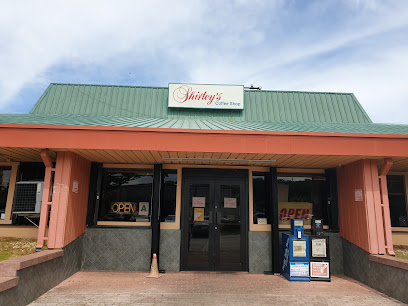
Crust Pizzeria Napoletana
Experience the taste of Italy at Crust Pizzeria Napoletana in Hagåtña – where authentic pizza meets local charm.
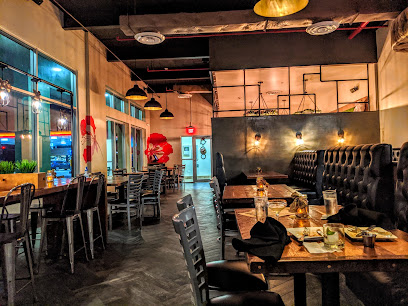
TuRe’ Café
Discover the flavors of Guam at TuRe’ Café, where local cuisine meets international flair in a cozy atmosphere.
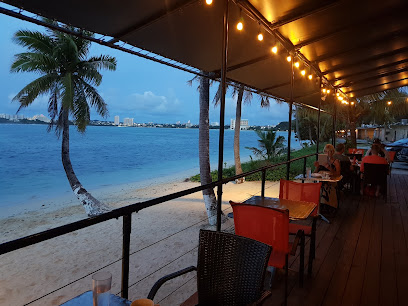
Capricciosa Restaurant
Experience authentic Italian cuisine at Capricciosa Restaurant in Guam—where every dish tells a story of flavor and tradition.
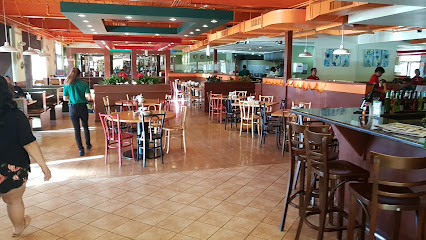
Meskla Chamoru Fusion Bistro - Hagatna
Experience the fusion of traditional Chamorro cuisine with modern culinary techniques at Meskla Chamoru Fusion Bistro in Hagåtña.
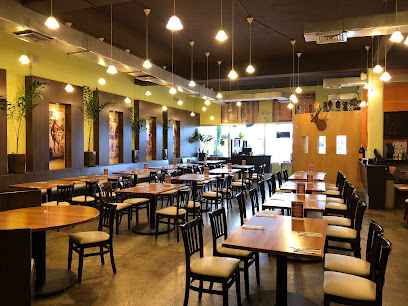
Stax Smash Burgers
Discover the ultimate burger experience at Stax Smash Burgers in Hagåtña - where quality meets flavor!
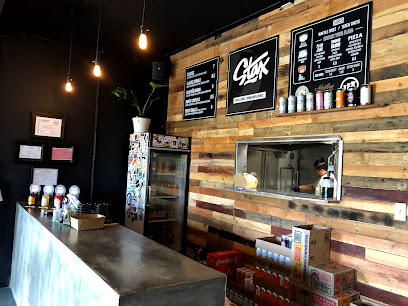
Carabao Brewing
Discover the vibrant flavors of Guam at Carabao Brewing - your go-to brewpub for craft beer and delicious bites in Hagåtña.
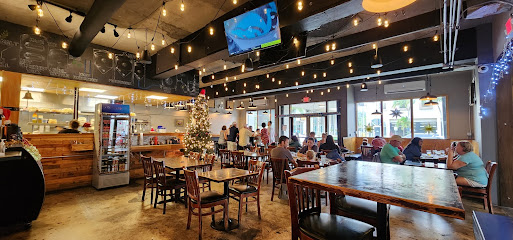
Jamaican Grill
Experience authentic Caribbean cuisine at Jamaican Grill in Guam's vibrant Chamorro Village.
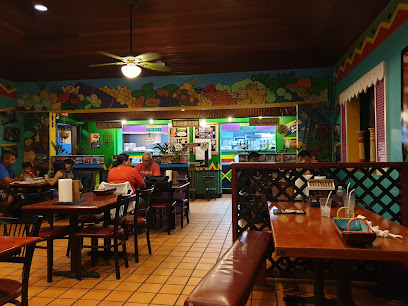
Wendy's Hagåtña
Savor delicious fast food favorites at Wendy's Hagåtña – where American comfort meets island charm in Guam.
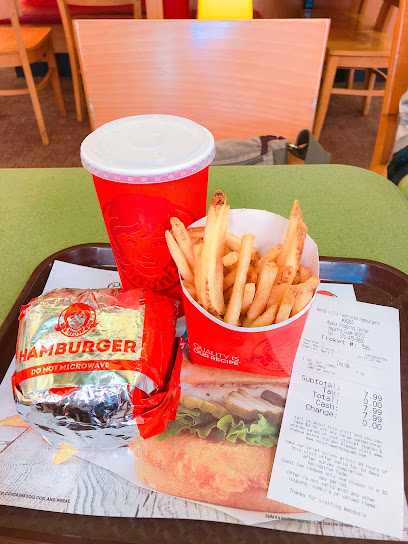
Burger King Hagatna
Savor delicious flame-grilled burgers and fast food favorites at Burger King Hagatna while enjoying the vibrant culture of Guam.
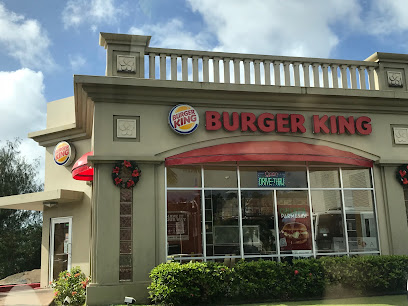
Crab Daddy Guam
Discover Crab Daddy Guam: A vibrant seafood restaurant in Hagåtña offering fresh flavors and unique drinks for every palate.
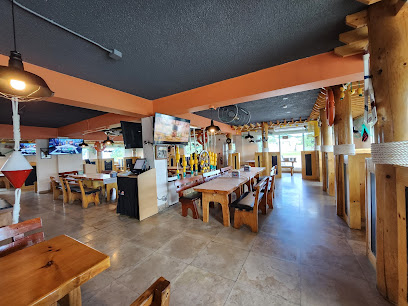
Panda Express
Savor authentic Chinese flavors at Panda Express in Hagåtña - perfect for quick bites or family meals.
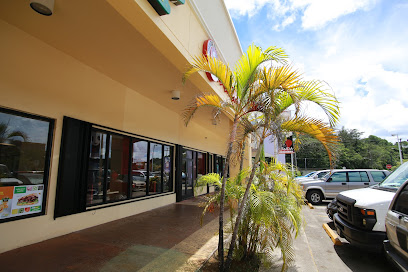
Markets, malls and hidden boutiques
SM Island Guam
Explore the vibrant offerings at SM Island Guam, where local culture meets unique shopping experiences in the heart of Hagåtña.

Crowns Guam
Explore the vibrant fashion scene at Crowns Guam, where unique styles meet the spirit of island life in Hagåtña.
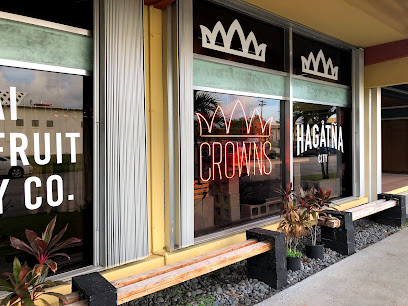
Julale Shopping Center
Discover the vibrant Julale Shopping Center in Hagåtña, Guam - a shopping paradise with local boutiques, international brands, and delicious dining options.

Hidden-Treasures-Thrift-Store-and-Boutique
Explore Hidden Treasures Thrift Store and Boutique in Guam for unique clothing finds and sustainable shopping in a charming atmosphere.

BLUSH Bridal & BLU
Explore BLUSH Bridal & BLU, Guam's premier bridal shop offering elegant wedding attire and exceptional service for your special day.

Fokai Shop Hagatna
Explore unique fashion at Fokai Shop Hagatna, where local culture meets stylish designs in a welcoming atmosphere.
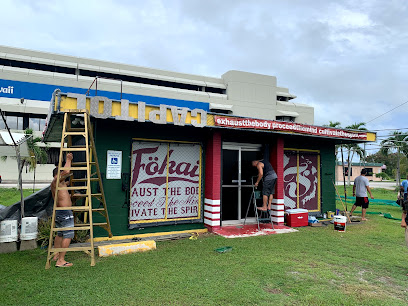
Threads Guam
Discover the essence of Guam's fashion at Threads Guam, a women's clothing store offering unique styles and local designer pieces.

Hong Kong Center
Explore the vibrant selection of unique gifts and local crafts at Hong Kong Center in Guam, perfect for souvenirs and mementos.
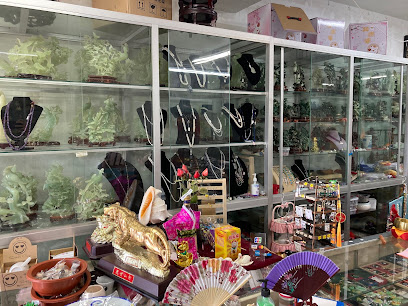
M MARKET
Explore the best of convenience shopping at M MARKET in Hagåtña, Guam, where quality meets accessibility for every traveler.

Getglammedgu
Explore Getglammedgu, Hagåtña's premier cosmetics store, offering a diverse range of beauty products to enhance your style.
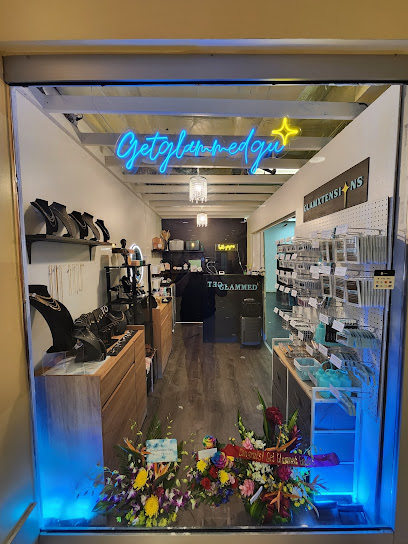
YAMAHA
Explore the vibrant world of music at YAMAHA in Hagåtña, Guam, where every note tells a story of island culture.
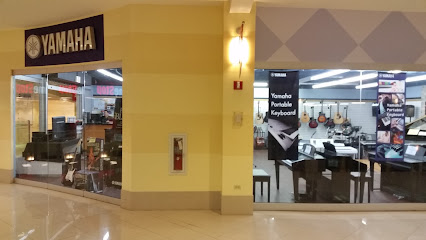
Good Lookin Out
Explore Good Lookin Out in Hagåtña for unique thrifted clothing and accessories, blending local culture with fashion in a vibrant shopping experience.

Padre Pio Gift Store
Explore the Padre Pio Gift Store in Hagåtña, Guam for unique religious items and treasures that celebrate spiritual heritage and devotion.

Nova
Discover unique headwear at Nova in Hagåtña, where fashion meets the spirit of Guam. Perfect for tourists and locals alike.

Guam Cultural Center
Explore Guam's rich culture through unique local crafts and souvenirs at the Guam Cultural Center in Tamuning.

Essential bars & hidden hideouts
Caliente Restaurant
Discover the vibrant flavors of Mexico at Caliente Restaurant in Hagåtña, Guam, where every dish is a celebration of culinary artistry.
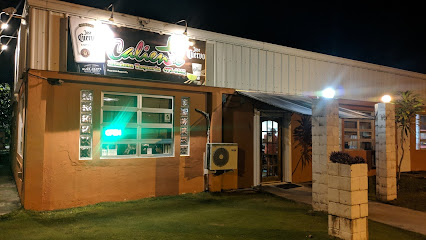
Carabao Brewing
Experience the best of Guam's craft beer culture at Carabao Brewing, a lively brewpub offering delicious food and unique brews.
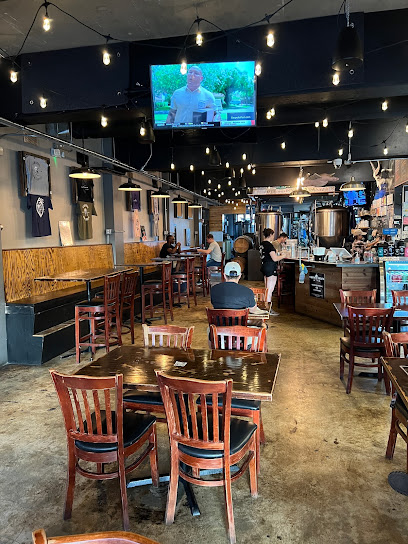
Fizz & Co.
Experience the flavors of Guam at Fizz & Co., a cozy diner serving delicious local dishes in a friendly atmosphere.
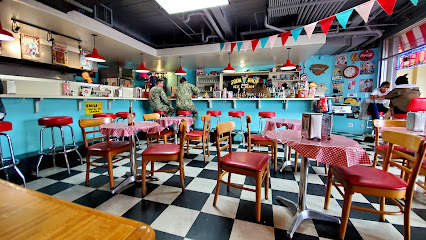
Bernie's Bar
Discover the lively ambiance and diverse drink selection at Bernie's Bar, a vibrant hotspot in Apotgan, Guam, perfect for tourists seeking nightlife.

The Venue
Discover the vibrant nightlife at The Venue, a lively bar in Hagåtña offering diverse drinks and a welcoming atmosphere for tourists.
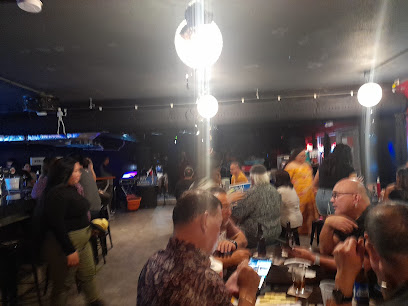
Wild Bills
Discover the lively spirit of Guam at Wild Bills, where friendly service and refreshing drinks await in a vibrant atmosphere.
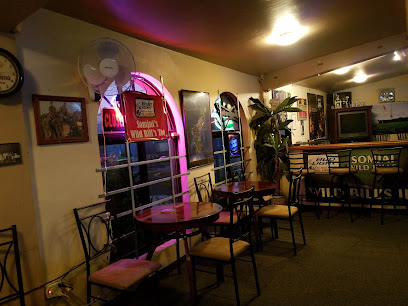
Skyline Resto-Pub
Experience the vibrant atmosphere of Skyline Resto-Pub in Apotgan, Guam, where stunning views meet delicious drinks and great company.
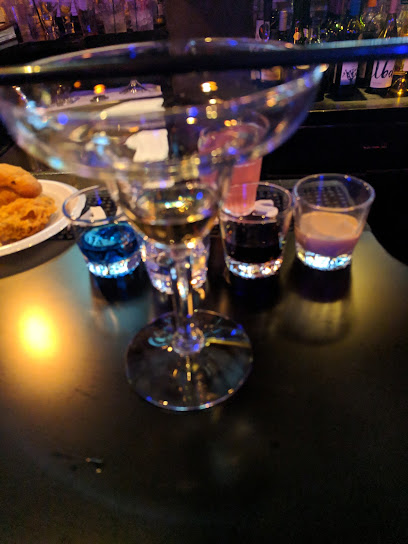
Las Vegas Karaoke & Bar
Experience the vibrant nightlife of Guam at Las Vegas Karaoke & Bar, where singing and fun come together in a lively atmosphere.
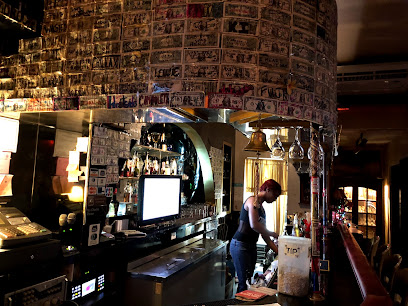
Cindy's Pub
Experience the vibrant nightlife at Cindy's Pub in Hagåtña, Guam - where friendly faces and great drinks await you!
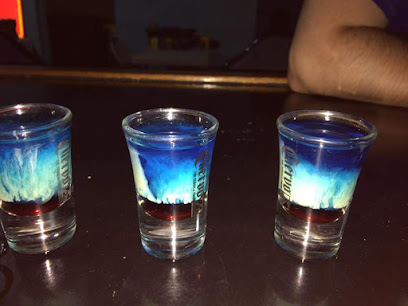
Player's Bar
Discover the vibrant nightlife at Player's Bar in Guam, where great drinks and lively entertainment await every visitor.
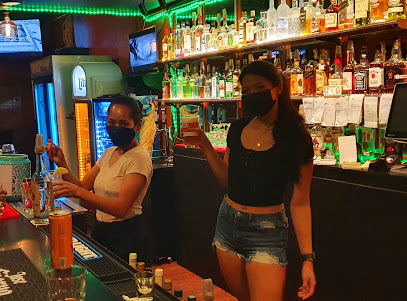
iCue Karaoke RestoLounge
Experience the vibrant nightlife of Anigua at iCue Karaoke RestoLounge, where singing, cocktails, and fun come together for an unforgettable evening.
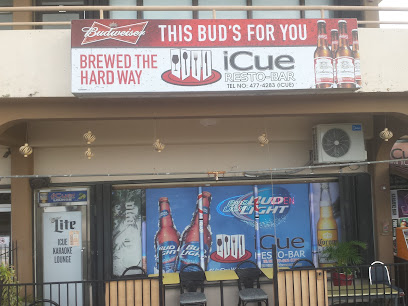
The Hare and Hound
Experience the vibrant bar scene at The Hare and Hound in Guam, where fun meets the beach with karaoke and refreshing cocktails.
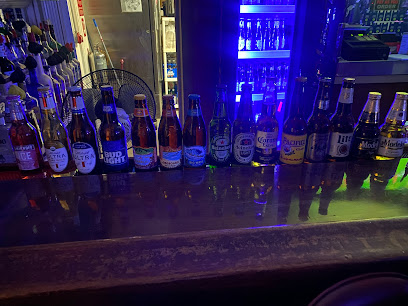
Linda’s Beachside Bar & Grill
Experience the vibrant flavors and stunning views at Linda’s Beachside Bar & Grill, the perfect spot for relaxation in Guam.
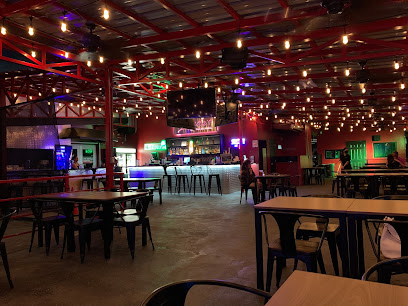
Good Company Bar
Discover the lively spirit of Good Company Bar in Hagåtña, Guam, where great drinks and unforgettable nights await every visitor.
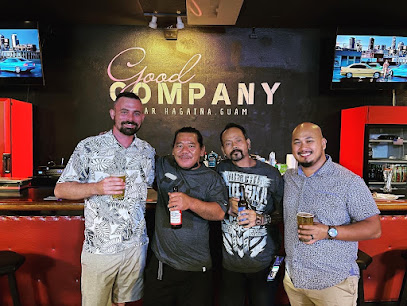
Willows Club
Discover the lively nightlife at Willows Club in Tamuning, Guam - where exceptional cocktails meet friendly service for an unforgettable experience.
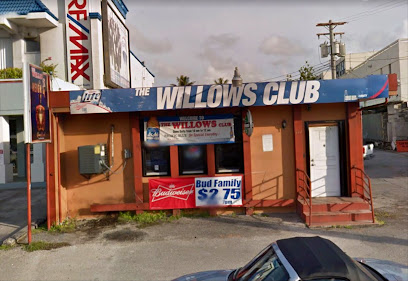
Local Phrases
-
- HelloHåfa Adai
[HAH-fah ah-DIE] - GoodbyeAdios
[ah-DYOS] - YesHåʻå
[HAH-ah] - NoTi ya
[TEE yah] - Please/You're welcomeFanatåsi/Na'ån-hu
[FAH-nah-TAH-see/NAH-ahn-hoo] - Thank youSi Yu'os Ma'åse
[SEE yoo-OSS mah-AH-seh] - Excuse me/SorryUmatras yu' / Kalu'ås
[oo-MAH-trahs yoo/KAH-loo-AHS] - How are you?Håfa tatatmanu hao?
[HAH-fah tah-TAHT-mah-noo how] - Fine. And you?Maolek. Hao?
[mah-OH-lek how] - Do you speak English?Kao un tungo' Ingles?
[kah-oh oon TOONG-oh IN-glehs] - I don't understandTi hu tungo'
[TEE hoo TOONG-oh]
- HelloHåfa Adai
-
- I'd like to see the menu, pleaseLokkue yuʻ fanmenu, fa'ånnai
[LOHK-kweh yoo fahn-MEH-noo, fah-AHN-nai] - I don't eat meatTi hu kumuentus
[TEE hoo koo-MWEHN-toos] - Cheers!Biba!
[BEE-bah] - I would like to pay, pleaseFanpåga yuʻ, fa'ånnai
[fahn-PAH-gah yoo, fah-AHN-nai]
- I'd like to see the menu, pleaseLokkue yuʻ fanmenu, fa'ånnai
-
- Help!Ayuda!
[ah-YOO-dah] - Go away!Ayek agupa!
[ah-YEHK ah-GOO-pah] - Call the Police!Gumåtao i Polisi!
[goo-MAH-tow ee poh-LEE-see] - Call a doctor!Gumåtao i manmediku!
[goo-MAH-tow ee mahn-meh-DEE-koo] - I'm lostTi hu gagaiguai
[TEE hoo gah-GAH-ee-gwai] - I'm illMakaloffo yu'
[mah-kah-LOHF-foh yoo]
- Help!Ayuda!
-
- I'd like to buy...Lokkue yuʻ maimai...
[LOHK-kweh yoo mah-ee-mah-ee] - I'm just lookingKåo hao hokkue
[KAH-oh how hohk-kweh] - How much is it?Afok yan iyon?
[ah-FOHK yahn ee-YOHN] - That's too expensiveMånnge ti mahalang
[MAHNG-geh tee mah-HAH-lahng] - Can you lower the price?Mågof siha humahan iyon?
[MAH-gohf see-hah hoo-MAH-hahn ee-YOHN]
- I'd like to buy...Lokkue yuʻ maimai...
-
- What time is it?Fino' klokta iyon?
[fee-NOH klohk-tah ee-YOHN] - It's one o'clockPara uno
[PAH-rah OO-noh] - Half past (10)Maktol (10)
[mahk-TOHL (10)] - MorningManana
[mah-NAH-nah] - AfternoonMamaita'i
[mah-MY-tah-ee] - EveningMalampe
[mah-LAHM-peh] - YesterdayKåhu
[KAAH-hoo] - TodayGof ma'ase
[gohf mah-AH-seh] - TomorrowMåsagi
[MAH-sah-gee] - 1Manglo
[MAHNG-loh] - 2Månot
[MAH-noht] - 3Måtres
[MAH-trehs] - 4Måpat
[MAH-paht] - 5Måsingko
[mah-SEENG-koh] - 6Måsaisi
[mah-SAH-ee-see] - 7Måfiti
[mah-FEE-tee] - 8Måguålu
[mah-GWAH-loo] - 9Måsiva
[mah-SEE-vah] - 10Målasa
[mah-LAH-sah]
- What time is it?Fino' klokta iyon?
-
- Where's a/the...?Tåya i...
[TAH-yah ee] - What's the address?Fino' i direksion?
[fee-NOH ee dee-rek-see-ohn] - Can you show me (on the map)?Mågof siha humuyong gi mapan?
[MAH-gohf see-hah hoo-MOO-yohng gee mah-PAHN] - When's the next (bus)?Fino' i manmananåla?
[fee-NOH ee mahn-mahn-ah-NAH-lah] - A ticket (to ....)Un bilite (para ...)
[oon bee-LEE-teh PAH-rah]
- Where's a/the...?Tåya i...
History of Hagåtña
-
Before Spanish colonization, Hagåtña was inhabited by the Chamorro people, the indigenous population of Guam. The Chamorros had a sophisticated society with complex social structures and advanced seafaring skills. They lived in communal houses and built impressive latte stone pillars, which served as foundations for their homes and are emblematic of Chamorro culture.
-
In 1668, Spanish missionaries arrived in Hagåtña, marking the beginning of Spanish colonization. Father San Vitores established the first Catholic mission in the city, which led to the widespread conversion of the Chamorro people to Christianity. During this period, Hagåtña became the administrative and ecclesiastical center of the Mariana Islands under Spanish rule.
-
In 1898, the Spanish-American War brought significant changes to Hagåtña. After the war, Spain ceded Guam to the United States under the Treaty of Paris. This marked the end of over 230 years of Spanish rule and the beginning of American administration in Guam. Hagåtña retained its status as the island's capital under the new governance.
-
During World War II, Hagåtña experienced significant turmoil. In 1941, Japanese forces invaded Guam, leading to a three-year occupation. The city suffered extensive damage due to the conflict. In 1944, the Battle of Guam saw American forces liberate the island, and Hagåtña was subsequently rebuilt. This period left a lasting impact on the city's landscape and its residents.
-
After World War II, Hagåtña underwent extensive reconstruction. The city saw significant developments in infrastructure, education, and healthcare. As Guam became a strategic military location for the United States, Hagåtña grew in importance. Today, the city's rich history is reflected in its diverse architecture, cultural festivals, and historical landmarks, making it a vibrant hub of Chamorro heritage and American influence.
Hagåtña Essentials
-
Hagåtña, the capital of Guam, is accessible by air through the Antonio B. Won Pat International Airport (GUM), located in Tamuning, just a short drive from Hagåtña. Major airlines such as United Airlines and Japan Airlines offer regular flights to Guam from various international destinations, including Tokyo, Manila, and Honolulu. From the airport, you can take a taxi or rent a car to reach Hagåtña.
-
Hagåtña is relatively small, making it easy to explore on foot. For longer trips, taxis and rental cars are popular options. Public transportation is available through the Guam Regional Transit Authority (GRTA) buses, though they may not be as frequent or timely as in larger cities. Riding a bicycle is also a great way to explore the city and its surroundings.
-
The official currency in Guam is the US Dollar (USD). Credit and debit cards are widely accepted in hotels, restaurants, and larger stores. However, it's advisable to carry some cash for smaller establishments, local markets, and tips. ATMs are readily available throughout Hagåtña.
-
Hagåtña is generally a safe destination for tourists. However, it's always wise to take standard precautions. Avoid walking alone at night in poorly lit areas and keep your valuables secure. While Hagåtña does not have specific high-crime areas targeting tourists, staying vigilant and aware of your surroundings is recommended.
-
In case of an emergency, dial 911 for immediate assistance. The Guam Police Department and medical facilities, including the Guam Memorial Hospital, are available to provide help. It is advisable to have travel insurance that covers medical emergencies. Pharmacies are also available in the city for minor health issues and over-the-counter medications.
-
Fashion: Do dress comfortably but modestly. Swimwear should be reserved for the beach or pool areas. Religion: Do respect local customs and traditions. When visiting churches, dress conservatively and be mindful of ongoing services. Public Transport: Do be courteous and respectful to drivers and fellow passengers. Don't eat or drink on public transport. Greetings: Do greet people with a friendly 'Hafa Adai' (Hello). A handshake is appropriate for formal introductions. Eating & Drinking: Do try local Chamorro cuisine and accept food offerings graciously. Don't refuse hospitality, as it is considered impolite.
-
To experience Hagåtña like a local, visit the Chamorro Village Market on Wednesday evenings for local food, crafts, and cultural performances. Engage with locals to learn about the island's history and traditions. Explore the historic sites such as Plaza de España and Dulce Nombre de Maria Cathedral-Basilica. For a unique experience, take a walk along the Paseo de Susana Park, offering beautiful views of the harbor and a chance to mingle with local residents.
Trending Landmark in Hagåtña
-
Two Lover’s Point
-
Plaza de España
-
Mosa's Joint
-
Fort Nuestra Señora de la Soledad
-
Cetti Bay Overlook
-
Ritidian Point
-
Caliente Restaurant
-
Shirley's Coffee Shop
-
Paseo de Susana
-
TuRe’ Café
-
Meskla Chamoru Fusion Bistro - Hagatna
-
Fort Santa Agueda
-
Mighty Purple Cafe
-
Fish Eye Underwater Observatory
-
Jamaican Grill
Nearby Cities to Hagåtña
-
Things To Do in Agana Heights
-
Things To Do in Sinajana
-
Things To Do in Tumon
-
Things To Do in Tamuning
-
Things To Do in Dededo
-
Things To Do in Mangilao
-
Things To Do in Santa Rita
-
Things To Do in Agat
-
Things To Do in Yigo
-
Things To Do in Koblerville
-
Things To Do in Saipan
-
Things To Do in Kagman
-
Things To Do in Garapan
-
Things To Do in Capital Hill
-
Things To Do in San Roque










